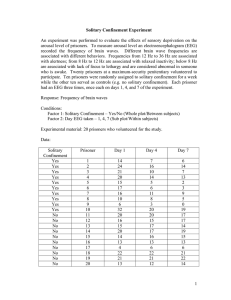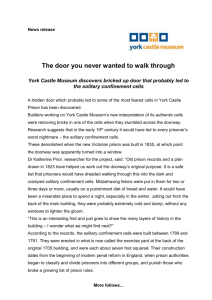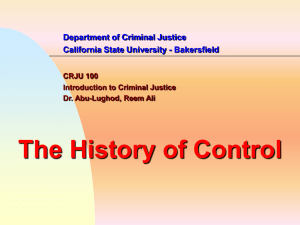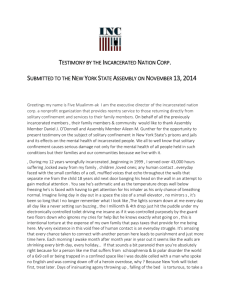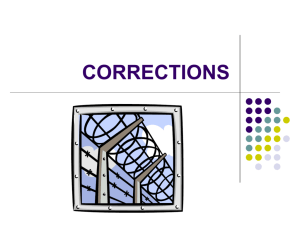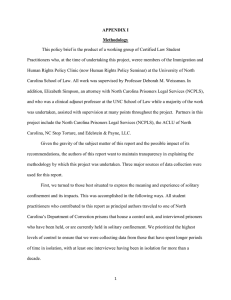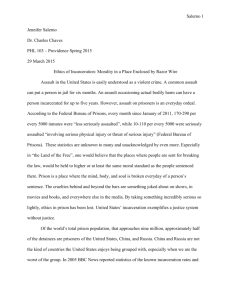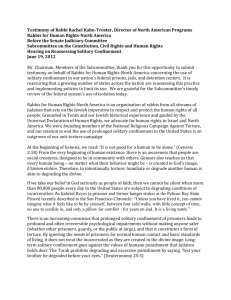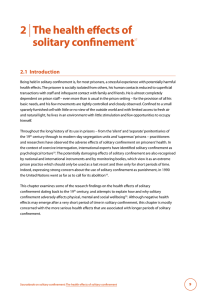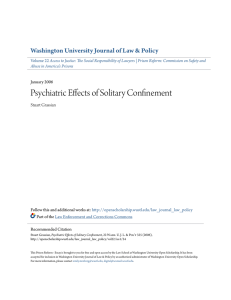Draft Proposed Legislation APPENDIX VII
advertisement
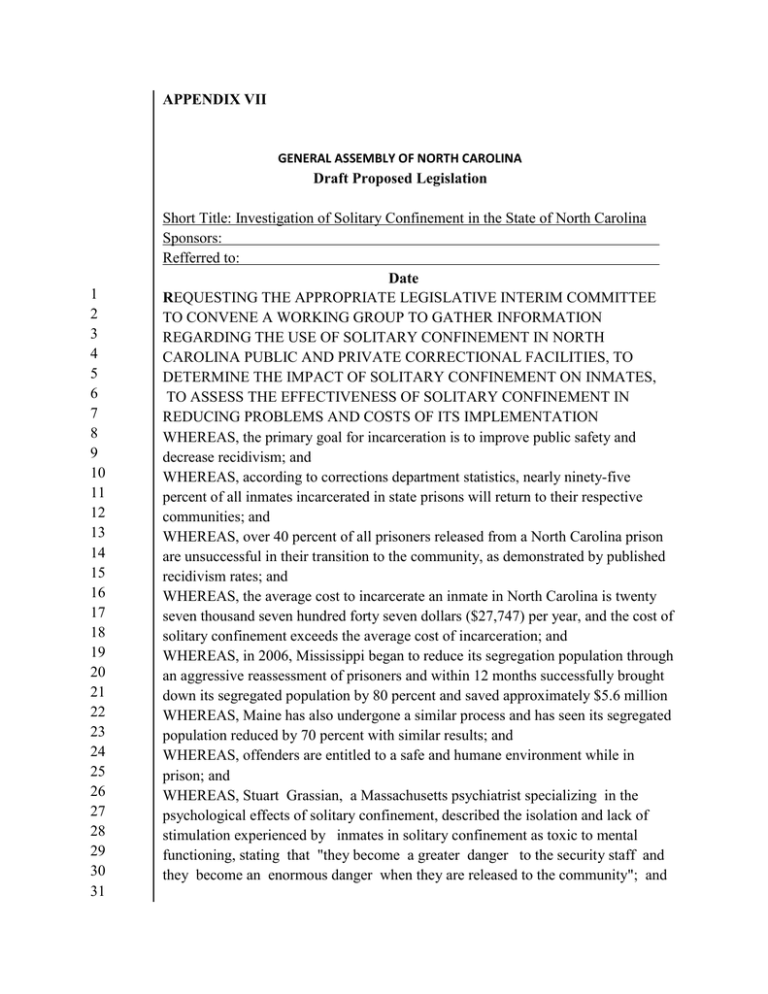
APPENDIX VII GENERAL ASSEMBLY OF NORTH CAROLINA Draft Proposed Legislation 1 2 3 4 5 6 7 8 9 10 11 12 13 14 15 16 17 18 19 20 21 22 23 24 25 26 27 28 29 30 31 Short Title: Investigation of Solitary Confinement in the State of North Carolina Sponsors: Refferred to: Date REQUESTING THE APPROPRIATE LEGISLATIVE INTERIM COMMITTEE TO CONVENE A WORKING GROUP TO GATHER INFORMATION REGARDING THE USE OF SOLITARY CONFINEMENT IN NORTH CAROLINA PUBLIC AND PRIVATE CORRECTIONAL FACILITIES, TO DETERMINE THE IMPACT OF SOLITARY CONFINEMENT ON INMATES, TO ASSESS THE EFFECTIVENESS OF SOLITARY CONFINEMENT IN REDUCING PROBLEMS AND COSTS OF ITS IMPLEMENTATION WHEREAS, the primary goal for incarceration is to improve public safety and decrease recidivism; and WHEREAS, according to corrections department statistics, nearly ninety-five percent of all inmates incarcerated in state prisons will return to their respective communities; and WHEREAS, over 40 percent of all prisoners released from a North Carolina prison are unsuccessful in their transition to the community, as demonstrated by published recidivism rates; and WHEREAS, the average cost to incarcerate an inmate in North Carolina is twenty seven thousand seven hundred forty seven dollars ($27,747) per year, and the cost of solitary confinement exceeds the average cost of incarceration; and WHEREAS, in 2006, Mississippi began to reduce its segregation population through an aggressive reassessment of prisoners and within 12 months successfully brought down its segregated population by 80 percent and saved approximately $5.6 million WHEREAS, Maine has also undergone a similar process and has seen its segregated population reduced by 70 percent with similar results; and WHEREAS, offenders are entitled to a safe and humane environment while in prison; and WHEREAS, Stuart Grassian, a Massachusetts psychiatrist specializing in the psychological effects of solitary confinement, described the isolation and lack of stimulation experienced by inmates in solitary confinement as toxic to mental functioning, stating that "they become a greater danger to the security staff and they become an enormous danger when they are released to the community"; and 1 2 3 4 5 6 7 8 9 10 11 12 13 14 15 16 17 18 19 20 21 22 23 24 25 26 27 28 29 30 31 32 33 34 35 36 37 38 39 40 WHEREAS, isolation can be psychologically harmful to any prisoner, with the nature and severity of the impact depending on the individual, the duration of the isolation and the particular conditions of confinement; and WHEREAS, an evaluation of Unit 1 at the Central Correctional Institute in Raleigh by Jeffrey L Metzner M.D. and Dean Aufderheide, Ph.D. revealed that an alarmingly high number of inmates had multiple admissions into the crisis unit. The Dr.s concluded that this represented systemic problem at the facility that indicate that either the therapeutic resource offered there were inadequate or that the conditions of confinement were so harsh as to be causative, and WHEREAS, a 2006 study by the commission on safety and abuse in America's found that solitary confinement does more harm than good, is more expensive and does little to improve prison security or reduce violence; now, therefore, be it RESOLVED That The Joint Legislative Corrections, Crime Control, and Juvenile Justice Oversight Committee on Justice and Public Safety be directed to study the uses of solitary confinement, including administrative segregation, disciplinary segregation, and other forms of solitary confinement based on control status, by the Department of Corrections; the costs of such confinement compared with the costs of holding prisoners in the general population; and the impact on prisoners who have been in prolonged solitary confinement; and shall also study the feasibility of limiting the widespread use of segregation for long periods of time, including at Unit 1 at Central Prison in Raleigh, and whether such limitation has any impact on safety within the prison facilities.
